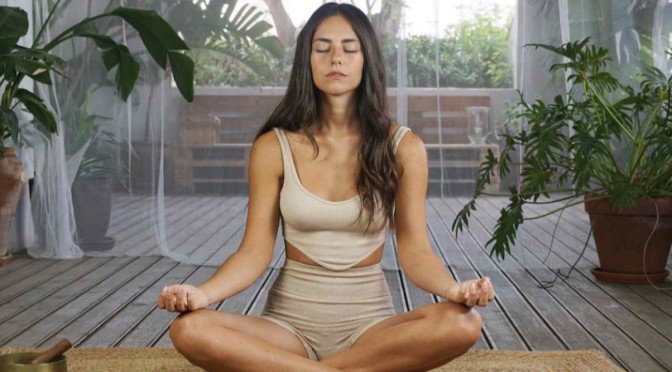“Where there is breath, there is potential.”
—Buddhist proverb
We are born with a breath, and according to Eastern philosophy and Eastern religions, our breaths are numbered. The difference lies in how we handle them and how we extend them.
In India, there are yogis who choose to be buried in the earth after inhaling and remain buried for a significant period until this breath is “exhausted.” This is a form of meditation technique.
Breathing as a path to self-awareness in yoga is known from the branch of Swara Yoga, which focuses entirely on breath. A Swara Yogi acts according to how air flows through their nostrils, and their decisions are based on the flow of air at that given moment. To the uninformed, this may seem irrational, but the yogi knows how the Earth’s energies move and lives in accordance with them. It is a highly mystical branch of yoga, and a Swara yogi trains for years under the guidance of an experienced guru.
Our breath typically alternates every 90 minutes during the 24-hour cycle, shifting from the right to the left nostril and vice versa, with moments where both nostrils flow equally. When the right nostril is active, the left hemisphere of the brain is engaged, and we are in action mode. Conversely, when the left nostril is open, the right hemisphere is active, and we experience relaxation. Right before sleep, the left nostril is usually open. Between these alternations, there are also moments when the breath is equal in both nostrils, which varies from person to person.In yoga, we call this a relaxed mind! Equal breathing brings mental focus, calmness, and a form of alertness, as brain function is heightened but balanced. The brain’s hemispheres—the sympathetic and parasympathetic systems—are harmonized.
In yoga, the branch that deals with breath is called Pranayama, where “Prana” means energy, and “Yama” means expansion. Pranayama is the technique of expanding energy, and the goal of these practices is to train the breath so that we experience more time in equal breathing and enjoy all the associated benefits.
Everything is Prana, energy, and the breath can increase Prana in our body and bring healing. This technique is called Prana Vidya, taught by trained teachers and practiced by experienced instructors.
Breathing can be challenging for beginners, as the pace of life “alienates” us from deep breathing. Time must be dedicated to practice to “recall” what we were born with: deep abdominal breathing, which infants and young children naturally have.
A simple process for someone reading this article who wants to start with the basics of breath is to dedicate a few minutes a day to becoming aware of their breath.
Complete breathing includes not just the inhale but also the exhale. The way we inhale and exhale can reveal how we receive and give, how we relate to our surroundings, how open we are, and how we live our day-to-day lives. Improving our breathing can bring significant changes to our lives.
Breathing connects the physical body with the other four energy bodies of individual existence, transmitting energetic information from the external environment to our inner field. Breath reflects the confusion of the energy bodies, and with proper guidance, it can restore them, allowing calmness and concentration to return, bringing balanced brain function.
Yoga and breath are interconnected, though Pranayama as a discipline can be taught independently. Hatha Yoga is the branch of yoga that includes Pranayama and prepares the body for the more demanding practices required by Raja Yoga, such as meditation. However, the gateway to entering and exiting meditation practice is breath.
Pranayama techniques, from the “simple” Nadi Shodhana to the more demanding Antar and Bahir Kumbhaka, are varied and plentiful. A dedicated student, through practice and over time, will…
Mastering a Pranayama technique takes years of practice, but its benefits are numerous and immediate. From the first moment of conscious breathing, peace and relaxation are felt.
Some of the many benefits of Pranayama include: stress reduction, elimination of chronic anxiety, mental concentration, and focus. Preventing problems is better than curing them, and this applies to Pranayama. The techniques yield immediate results when practiced regularly, so that when needed, the body’s system naturally recalls them, restoring balance effortlessly.
There are many Pranayama techniques for stress, insomnia, relaxation, blood pressure, heat and cold, and mental concentration. As I mentioned, it is best to learn them with guidance under normal conditions to properly absorb the practice.

Breathing Technique: Nadi Shodhana / Balancing Pranayama
1. Sit comfortably, either in a simple cross-legged position or with your feet flat on the floor, keeping your spine as upright as possible without tension.
2. Close your eyes and focus your awareness on your natural, spontaneous breath. Notice which nostril is slightly more open.
3. Bring the fingers of your right hand to the center of your eyebrows, placing your index and middle fingers there. Use your thumb to close your right nostril and, with your lips closed, inhale and exhale through your left nostril.
4. Repeat 5 breaths through the left nostril. Then, using your ring finger, close your left nostril and repeat 5 breaths through the right nostril.
5. Ensure your breaths are natural—don’t try to inhale more air than usual, and make sure you exhale fully.
Variations of Nadi Shodhana include alternate breathing—one complete breath through the left nostril, followed by one complete breath through the right nostril. A more advanced version involves inhaling through the left nostril and exhaling through the right.
It is essential to keep your head and torso stable throughout the practice.
Pranayama techniques should ideally be taught by a yoga teacher who understands both the benefits and limitations of each technique.
Frequently Asked Questions:
- Can everyone practice Pranayama techniques?
Yes, all adults can. There are no age restrictions, and as long as your yoga teacher knows your history, they will guide you properly. - Are there any risks associated with Pranayama techniques?
No, particularly with the simpler techniques aimed at balancing the brain. More specialized techniques, when done correctly and with guidance, are also safe. If you have a medical history, it’s important that your teacher knows so they can guide you appropriately. - How long do I need to practice yoga before learning Pranayama?
Most yoga styles introduce Pranayama from the beginning. Depending on the yoga style you follow, you can learn several breathing techniques within a year, including those for brain balancing, stress relief, and body temperature regulation (heat and cold)

Ió-Yogananda Calis-Bletzaki
Satyananda Yoga Teacher, Psychotherapist (NDI), Life Coach